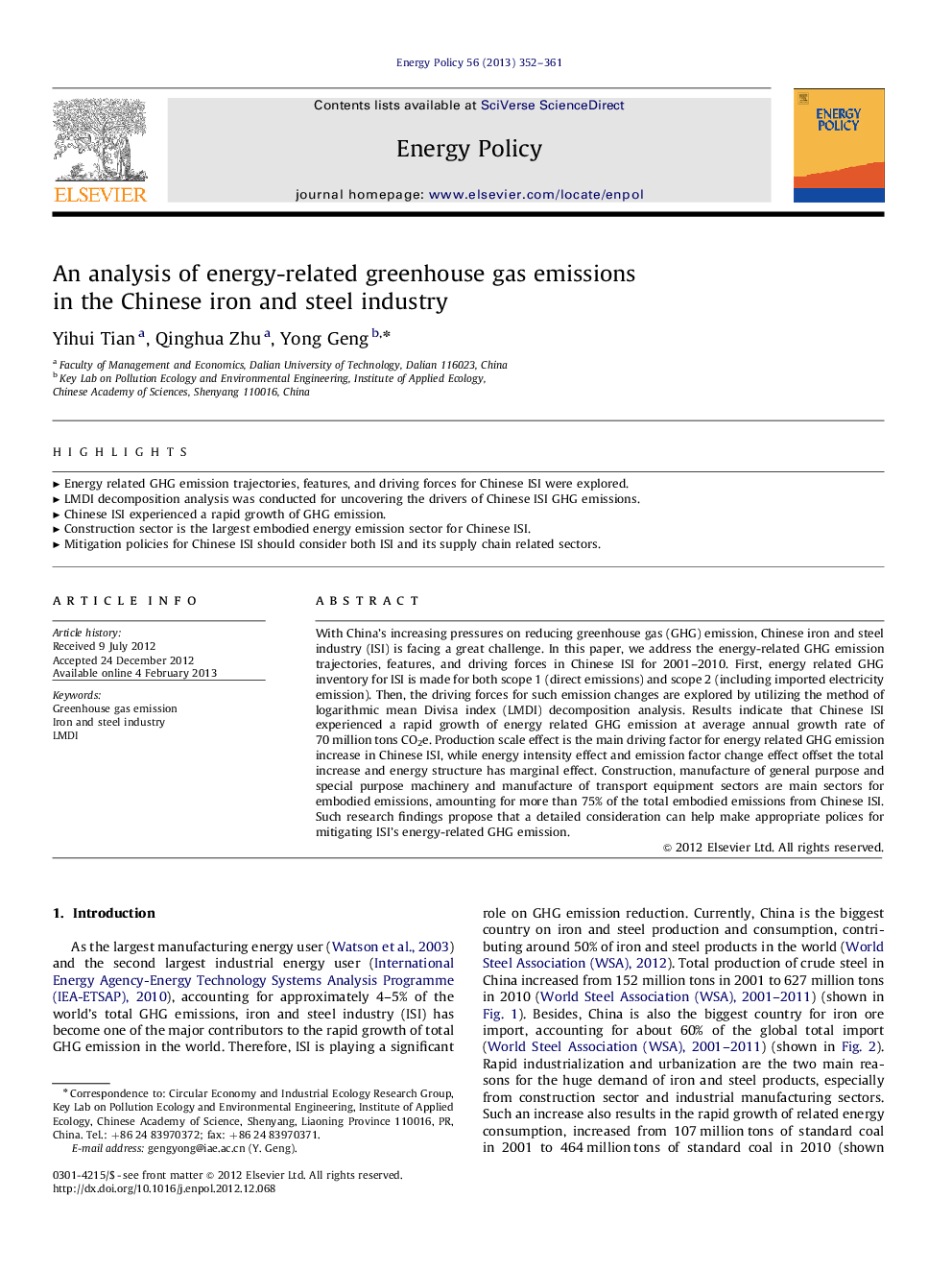| Article ID | Journal | Published Year | Pages | File Type |
|---|---|---|---|---|
| 994791 | Energy Policy | 2013 | 10 Pages |
With China's increasing pressures on reducing greenhouse gas (GHG) emission, Chinese iron and steel industry (ISI) is facing a great challenge. In this paper, we address the energy-related GHG emission trajectories, features, and driving forces in Chinese ISI for 2001–2010. First, energy related GHG inventory for ISI is made for both scope 1 (direct emissions) and scope 2 (including imported electricity emission). Then, the driving forces for such emission changes are explored by utilizing the method of logarithmic mean Divisa index (LMDI) decomposition analysis. Results indicate that Chinese ISI experienced a rapid growth of energy related GHG emission at average annual growth rate of 70 million tons CO2e. Production scale effect is the main driving factor for energy related GHG emission increase in Chinese ISI, while energy intensity effect and emission factor change effect offset the total increase and energy structure has marginal effect. Construction, manufacture of general purpose and special purpose machinery and manufacture of transport equipment sectors are main sectors for embodied emissions, amounting for more than 75% of the total embodied emissions from Chinese ISI. Such research findings propose that a detailed consideration can help make appropriate polices for mitigating ISI's energy-related GHG emission.
► Energy related GHG emission trajectories, features, and driving forces for Chinese ISI were explored. ► LMDI decomposition analysis was conducted for uncovering the drivers of Chinese ISI GHG emissions. ► Chinese ISI experienced a rapid growth of GHG emission. ► Construction sector is the largest embodied energy emission sector for Chinese ISI. ► Mitigation policies for Chinese ISI should consider both ISI and its supply chain related sectors.
